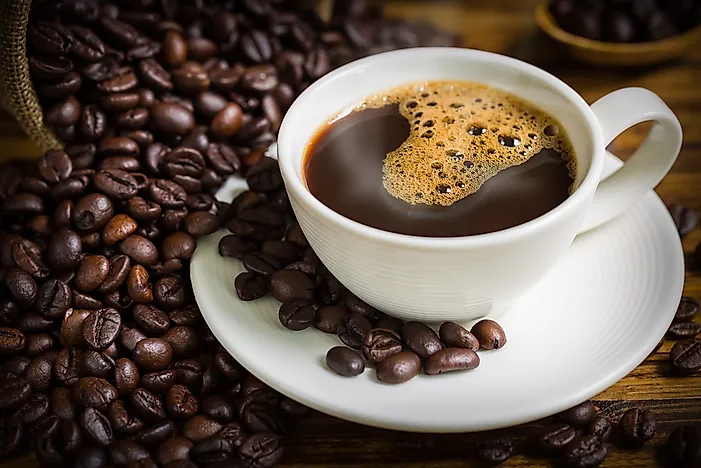
The espresso drink as we know it today, goes back to 1947, when Gaggia introduced the original equipment capable of creating constant high pressure throughout the shot pulling. The device was called Gaggia Crema Caffe and was meant for typical commercial usage. Prior To the Gaggia Crema Caffe almost every commercial and customer espresso device was steam driven, comparable to the modern moka pot maker.
Full story here - article source
Espresso is a full-bodied, strong coffee drink. The standard offering, a shot, is brewed by forcing pressurized hot water through finely ground coffee beans.
Espresso has a thicker consistency than coffee prepared by other brewing techniques. It has a greater concentration of suspended and dissolved solids and crema.
Espresso has all of the same flavors of coffee but enhanced-- bitter, lightly sweet, acidic, toasty. The precise flavor profile will vary depending on the coffee roast. It has a thicker, creamier consistency than regular coffee.
Espresso isn't a different coffee bean, although roasters might have an unique procedure for beans predestined to become espresso. Actually, roasters might prefer to use high-quality robusta beans to add an additional kick of caffeine.
Espresso or Expresso-- Use the Right Name
The spelling expresso is usually considered wrong, though some sources call it a less usual variation. Italy utilizes the term espresso, substituting s for the majority of x letters in Latin-root words; x is not considered part of the common Italian alphabet. Italian individuals frequently describe it simply as caffè (coffee), espresso being the normal coffee to get; in Spain, while coffee shop expreso is seen as the a lot more "formal" religion, café solo (alone, without milk) is the usual method to ask for it when at an espresso bar.
Espresso Brewing
Espresso is prepared by pushing hot water through a layer of compressed ground coffee, contained in a port-filter. Pulling a shot of espresso requires training and understanding, take a look at our espresso brewing overview, for a thorough tutorial.
When it boils down to it, the prep work of espresso is what really sets it apart. Due to the fact that they depend on the slow filtering of hot water through your grounds, other techniques of brewing take time. This implies more minutes in between you and a fresh cup of coffee.
Espresso equipments pressurize and shoot near-boiling water through finely-ground coffee beans packed into a coffee puck. This method offers you a complex, aromatic, and caffeine-packed shot of coffee in under thirty seconds.
When made properly, the actual espresso under the crema will have a distinct, rich taste, silky mouthfeel, and aromatic fragrance. The much shorter period of water exposure draws out less acid than various other preparation methods while still retaining 60% to 70% of the caffeine in the last cup.
So even though espresso takes just 30 secs to brew, it still gives a significant amount of caffeine. The process also preserves more volatile and aromatic coffee oils that you will not get in your standard mug of coffee.
Caffeine Content in Espresso Coffee
While espresso has the reputation of being high in caffeine, it all depends on how much you consume. Given that the beverage tends to be offered in smaller sized servings than drip coffee, it can often wind up having less caffeine than typical, made coffee. Double and triple shot drinks and mixed drinks like red-eyes can up the caffeine level significantly.
Espresso has 29 to 100 milligrams of caffeine in a single shot, usually hovering around 75 milligrams. A double shot contains 58 to 185 mg. For comparison, a mug of drip coffee can contain 80 to 200 mg of caffeine depending on the coffee bean and brewing method.
Espresso has all of the same aromas of coffee yet enhanced-- bitter, lightly sweet, acidic, toasty. Italian people generally refer to it simply as caffè (coffee), espresso being the common coffee to order; in Spain, while coffee shop expreso is seen as the more "official" term, café solo (alone, without milk ) is the usual way to ask for it when at an espresso bar.
Espresso is prepared by forcing hot water through a layer of compressed ground coffee, had in a port-filter. Espresso is a very strong coffee, with a lot of aroma, body, and aroma. Pulling a shot of espresso calls for training and knowledge, take a look at our espresso brewing guide, for a comprehensive tutorial.